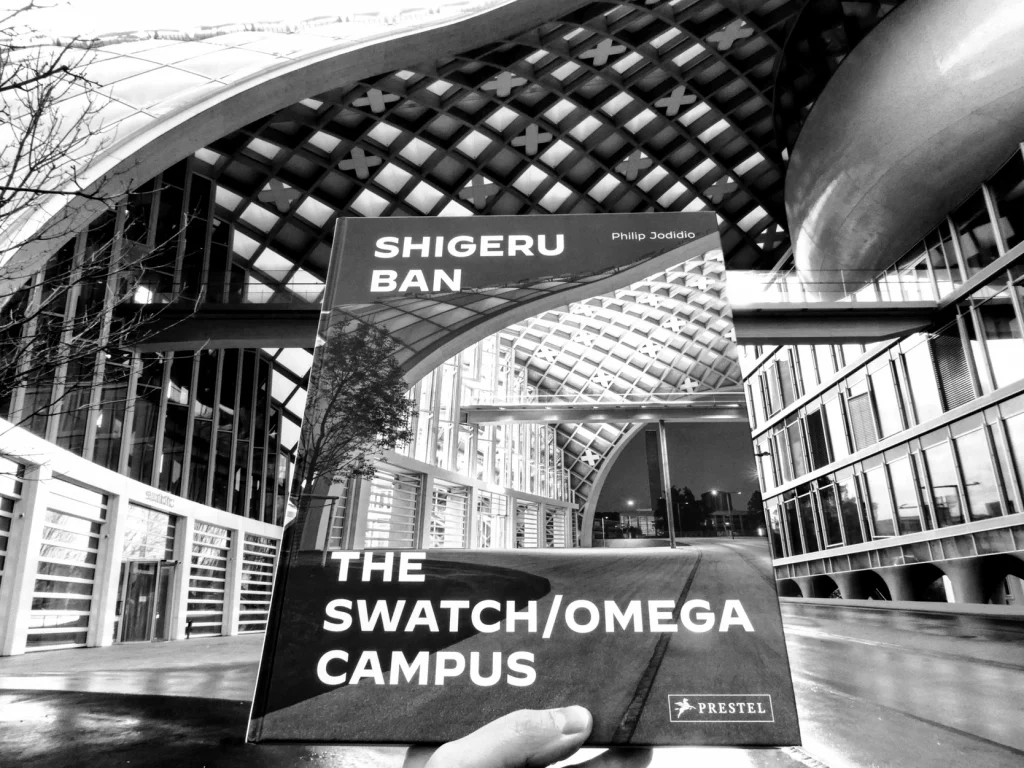
For the second episode of the “Bienne Makers” series, we’ll be spending some time on the fascinating bridge between architecture and watchmaking with the globally renowned architecture author Philip Jodidio.
Born in 1954 in New Jersey, Philip Jodidio is the author of over 100 books on contemporary architecture. He currently resides in Lausanne, Switzerland. A Knight in the French Order of Arts and Letters, Philip Jodidio was the editor-in-chief of Connaissance des Arts magazine for over 20 years.
His recent publication “The Swatch/Omega Campus” (Prestel Publishing) provides deep insights into the makings of acclaimed Japanese architect Shigeru Ban’s impressive project in Bienne, inaugurated in 2019.
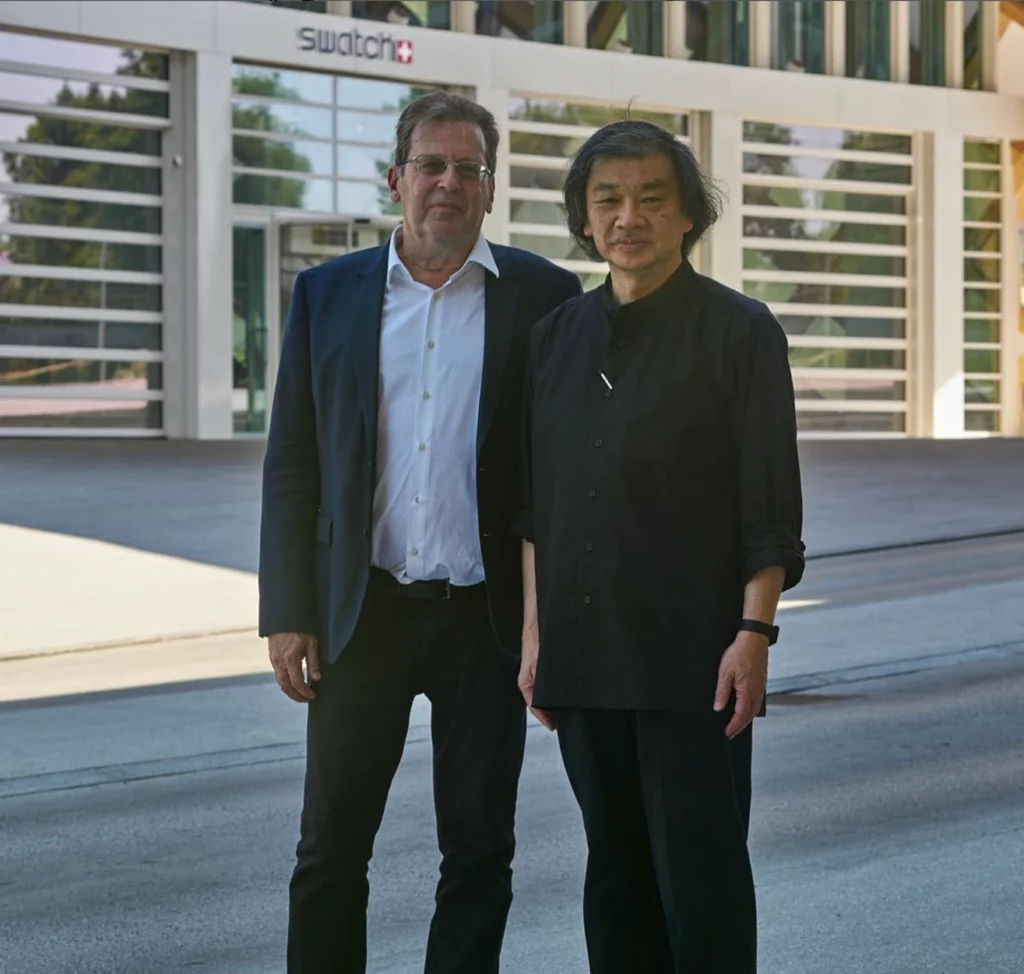
Philip Jodidio and Shigeru Ban – Photo Credit: Didier Boy de la Tour
Most publications in your bibliography are focused on a theme, or an architect. However, an entire book dedicated to a specific construction is a rarity. What was it about the Swatch/Omega campus that made you want to single it out?
I am the author of Taschen’s monograph on Shigeru Ban and I have been in touch with him for many years – both during trips to Japan and through my other books that have often featured individual projects of his. We also worked on a small book published prior to the opening of his Centre Pompidou Metz. Living in Switzerland, I was of course aware of the Swatch/Omega project, and I asked Shigeru if he thought a book on the subject might be possible – he responded in the affirmative.
I have in fact published several books on individual buildings ranging from the Museum of Islamic Art (Doha, Qatar, I.M. Pei) to the more recent National Museum of Qatar (Doha, Jean Nouvel), the Shenzen Bo’An International Airport (China, Masimilliano Fuksas), and West Kowloon Station (Hong Kong, Andrew Bromberg, AEDAS).
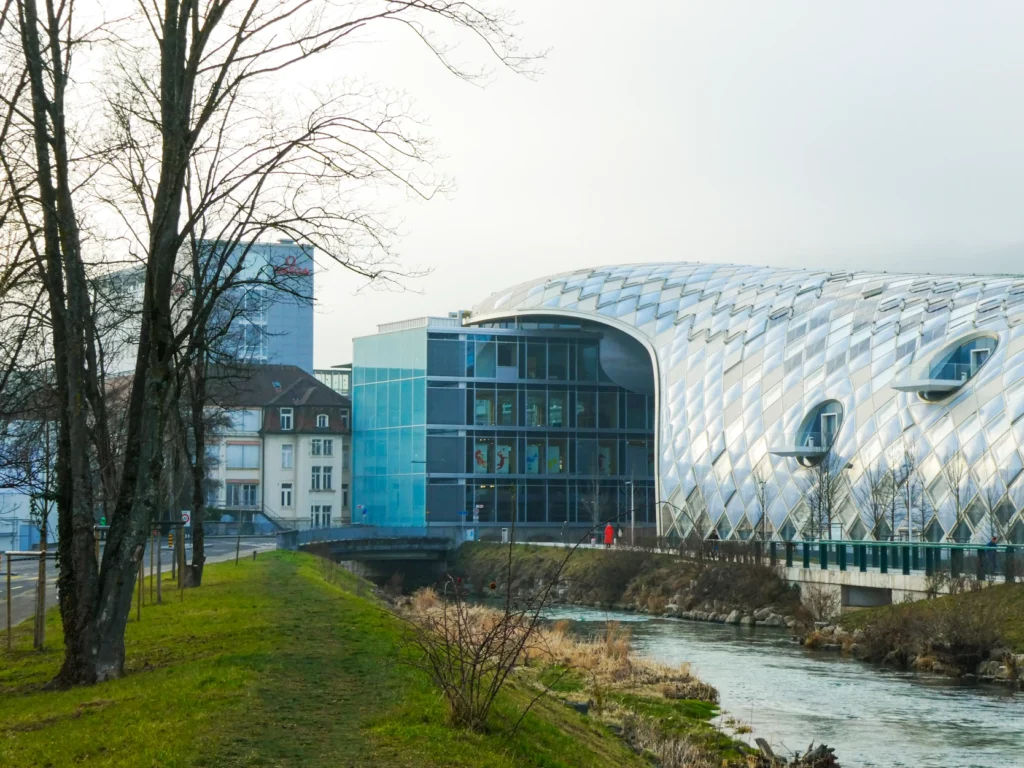
Omega manufacture (left), Cité du Temps (center) and Swatch HQ (right)
How does the Campus fit into the broader works of Shigeru Ban? How would you place it in comparison with other of his major works, such as the Pompidou Metz?
The arching roof of the Swatch Headquarters obviously bears comparison to the roof of the Centre Pompidou Metz. His interest in generous open space seen in the lobby of the Swatch building is also a connecting element with his other work. His use of wood is also present in both Swatch and Metz.
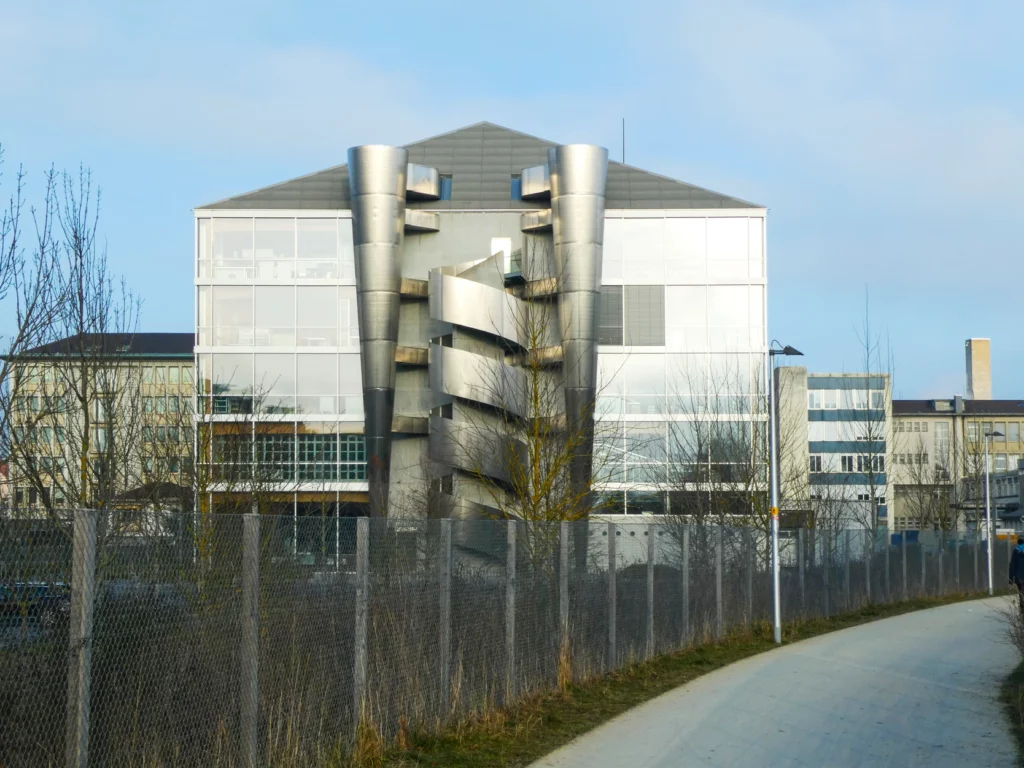
Side view of the Omega manufacture and its sculptural ventilation towers
Your book refers to certain architectural requirements specific to watchmaking, for instance access to natural light, or complex logistic automation. Can you tell us more about how Shigeru Ban’s vision was made to accommodate the production needs of Omega and Swatch?
It is indeed the Omega Factory that most takes into account the specifics of watchmaking – through the orientation of the front façade that provides natural light for those working inside, to the very concrete core of the building that was designed to house the sophisticated robotic system that delivers individual pieces to the watchmaker’s work tables. The dust-free environment needed for watches is also an element of the design – including the isolation of outside visitors from the workspace behind glass walls.
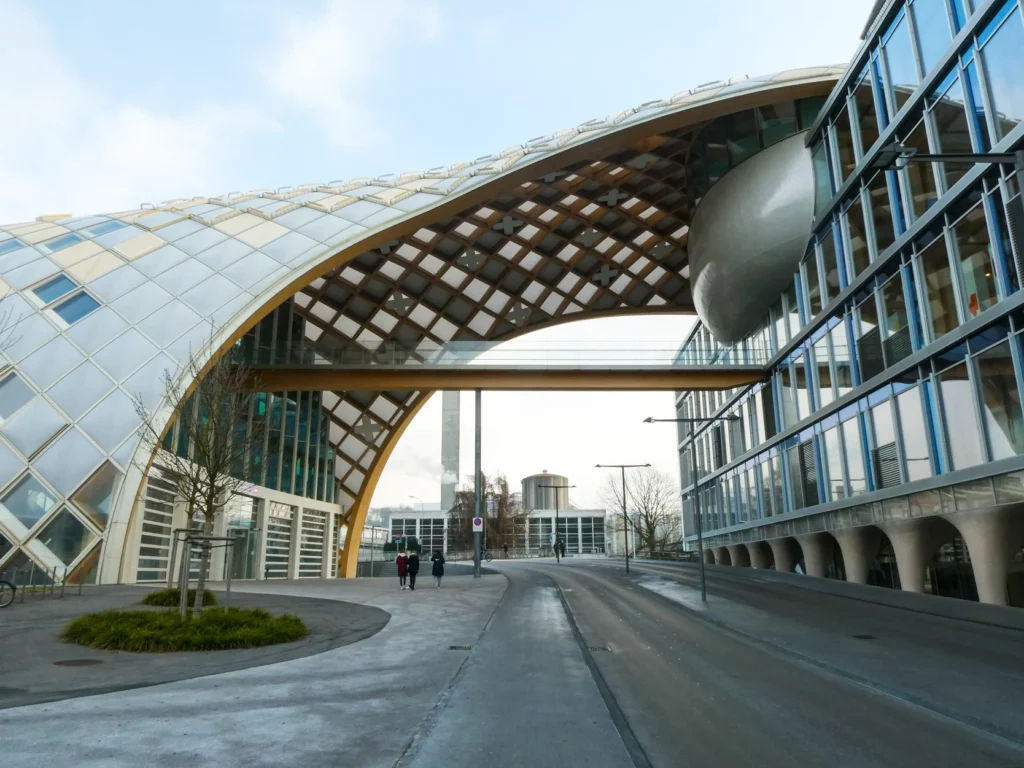
The bridge connecting Swatch HQ to the Cité du Temps museums
One notable characteristic of the campus is that it physically joins two brands that have such different DNA: Omega, the historic, luxury watch brand and Swatch, the 135 year younger pop culture icon. My understanding from reading your book is that initially, the two buildings were meant to remain separate. How did Shigeru Ban approach this and succeed in creating a unified whole?
Swatch/Omega always requested separate buildings and on different plots of land, but Shigeru Ban simplified and reoriented the scheme to create a real campus where Swatch has a bridge connecting to the museum/conference building. The Omega factory is further on, but the entire complex is interconnected and provides for generous public space, not originally part of the requested layout. The Swatch building indeed has a freer form than that, at the opposite end of the campus, intended specifically for Omega, but the architect’s use of wood and other design elements tie the two together in architectural terms.
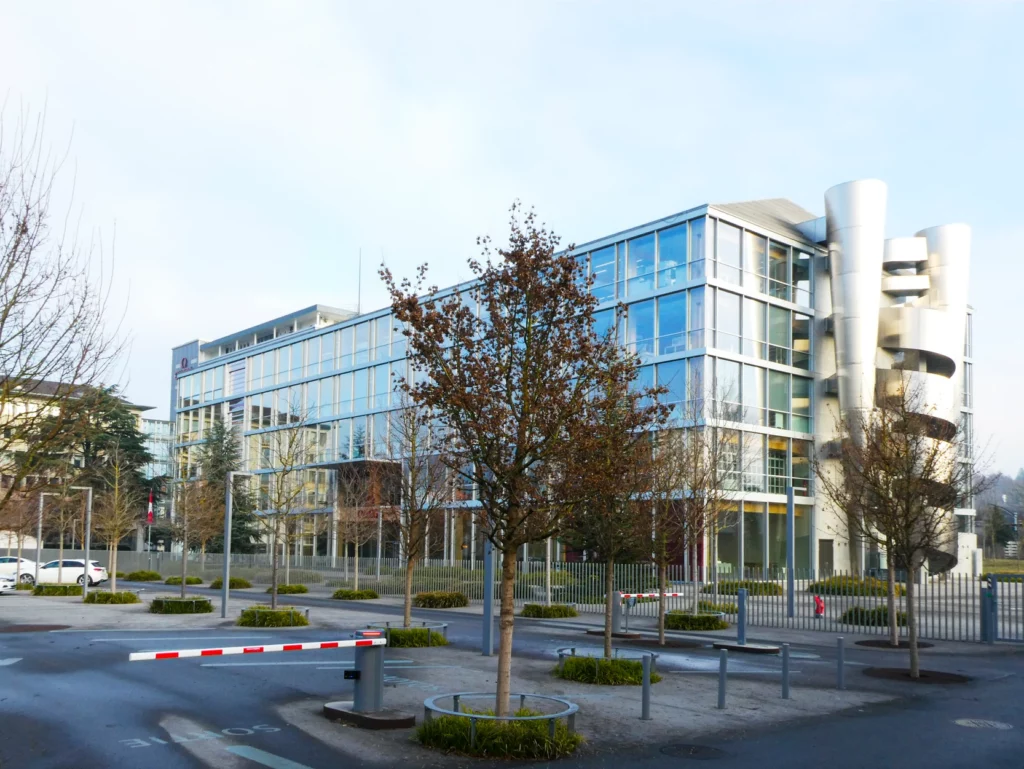
The Omega manufacture main building
Watchmaking, like architecture, constantly aims to strike a balance between form and function, between structural reliability and artistic creativity. However, to my knowledge at least, very few bridges between the two industries exist. What are your thoughts on this?
As you may know, not very far from Bienne in Le Brassus, Bjarke Ingels (BIG) has designed a new museum and is completing a hotel for Audemar Piguet. Rather than structural reliability and artistic creativity, it may be the “signature” element of buildings designed by well-known architects that can readily attract these watch brands.
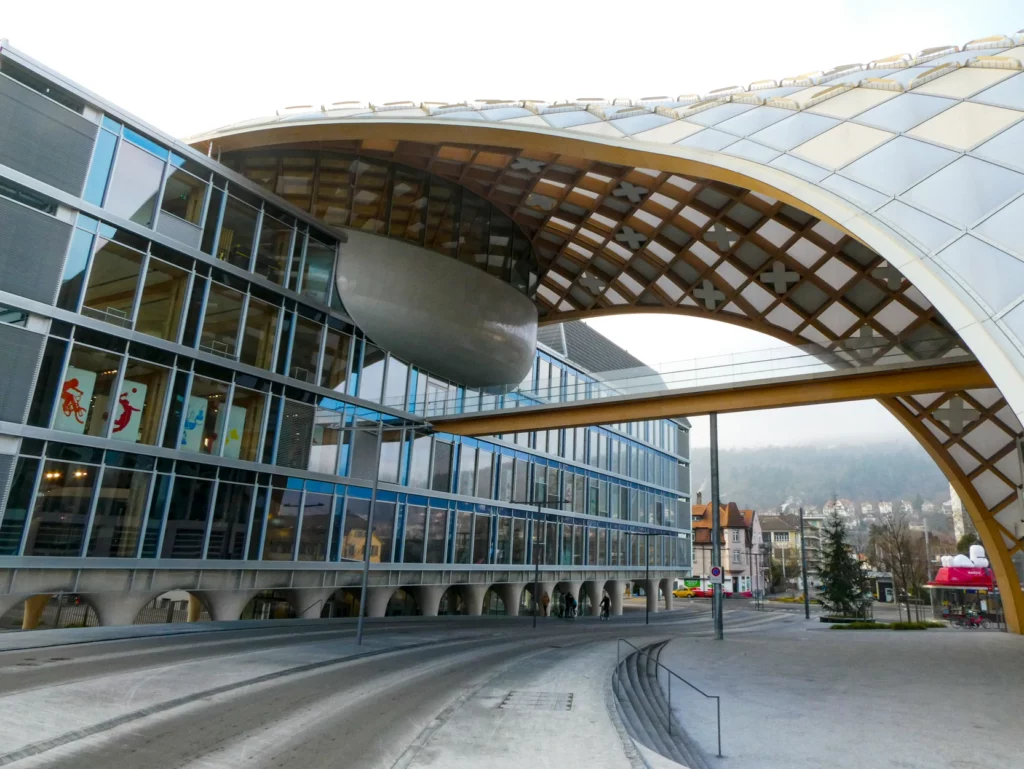
Yes, that is Snoopy in the background, taking a nap on the Swatch boutique
The Campus certainly stands out in the Bienne architectural scene. How do you find that it blends into the town’s landscape? What do you think is its significance for the city?
Omega already had a multi-building complex in Bienne. Shigeru Ban has actually made this campus much more coherent. His Swatch Headquarters does differ from the rest of the city in its design, but it is relatively low and does not impose its forms on the city. It may be that Ban’ use of wood and his respect for environmental concerns is more influential in the local context than any willful stylistic change that his work might encourage. Clearly, what he did is entirely contemporary, but it also fits into the city, which lies somewhat apart from the campus.
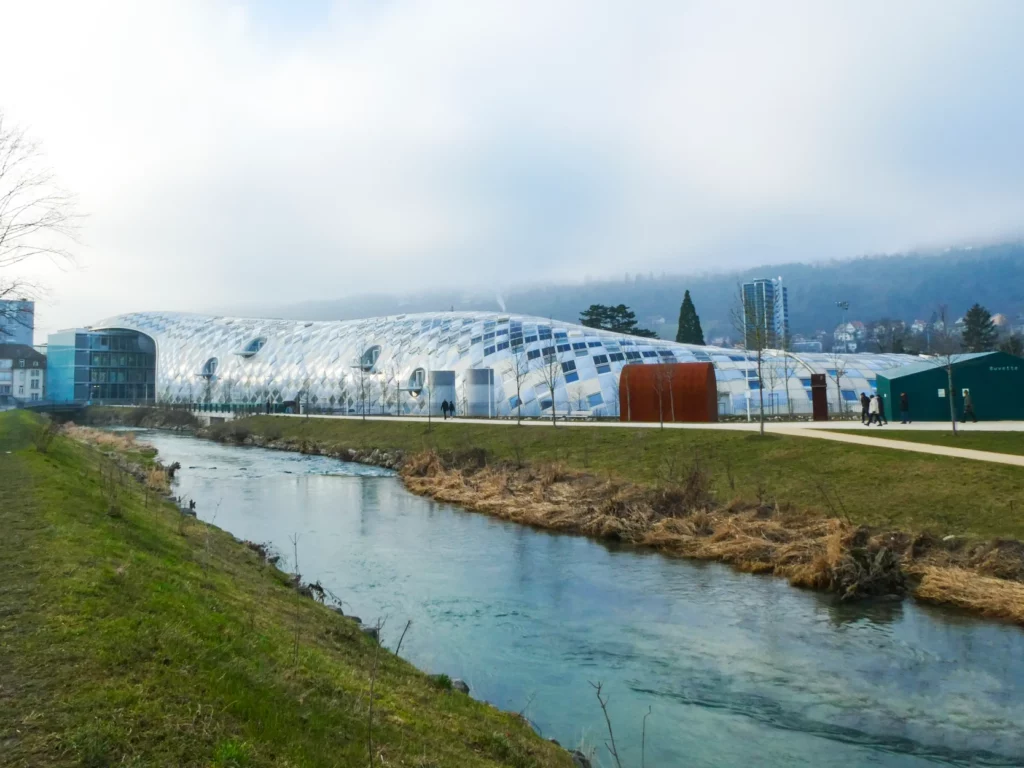
The Swatch HQ alongside the Suze river
Can you tell us about your experience writing the book? Your visits to Bienne, your conversations with Shigeru Ban, the photography…
I met with Shigeru Ban and toured the site with him when it was essentially finished. We sat down and did the interview at that time and while we were walking around the campus. I also worked very closely with Taro Okabe, who was the architect in charge of the actual construction on the site (working for Shigeru Ban). The architects provided the drawings and images.
Special thanks to Jeanne Grouet for the photography editing



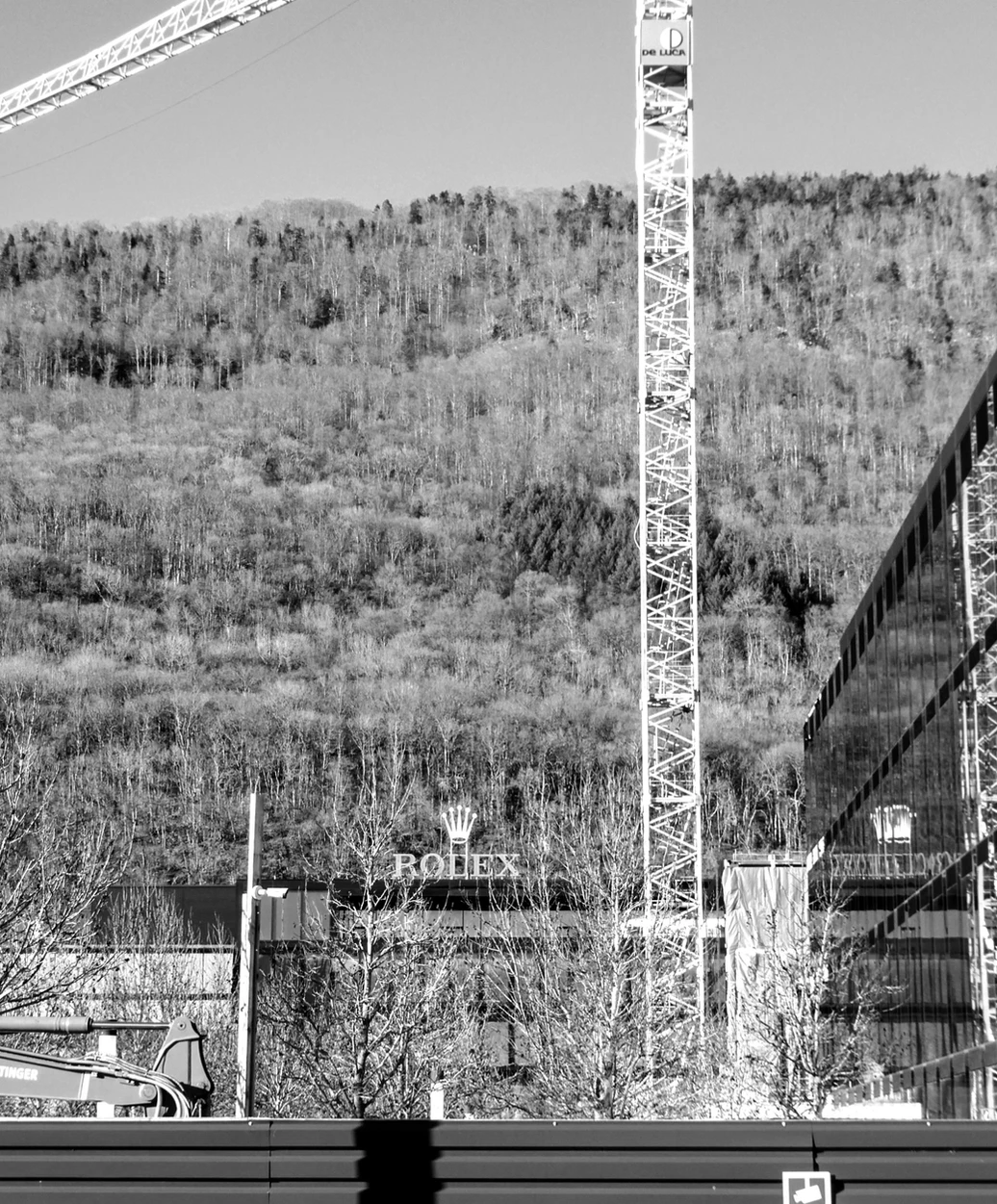
A very impressive piece of architecture!